Top Image: US Merchant Marine recruitment poster, 1944, courtesy of the National Archives.
“Did you ever hear of the Z-Men? Sounds like a gag, doesn’t it?” Bob Hope asked his audience over a Christmas radio broadcast in 1944. “Well it isn’t,” he continued. “Z-Men are the guys without whom General ‘Ike’s’ army and Admiral Nimitz’s navy couldn’t live…Z-Men are the men of the Merchant Marine.”
Drawing from the name of the identification papers, or z-card, required of the men who served in the US Merchant Marine, Hope went on to praise the hundreds of thousands of men who enlisted to sail on merchant ships across the Pacific and Atlantic. The mariners—or private seamen whom the US government could use for defense measures during times of conflict—supplied Allied operations in all theaters of the war with troops and crucial supplies including fuel and ammunition, “never knowing when a torpedo might smash the hull above [them] and send thousands of tons of sea water in to snuff out [their lives].”
Bob Hope wasn’t the only one to note the courage of the Merchant Marine and their importance for an Allied victory. General Douglas MacArthur credited mariners with playing a vital role in the liberation of the Philippines in 1945, holding “no branch in higher esteem than the Merchant Marine.” General Dwight Eisenhower also declared in 1944 that “when final victory is ours there is no organization that will share its credit more deservedly than the Merchant Marine.” “Their contribution to final victory will be long remembered,” Eisenhower predicted in 1945. Yet decades passed before mariners were to be recognized as veterans.
Merchant Marine Casualties
There were 243,000 mariners that served in the war. And 9,521 perished while serving—a higher proportion of those killed than any other branch of the US military. Roughly four percent of those who served were killed, a higher casualty rate than that of any of the American military services during World War II. There were 733 Merchant Marine ships sunk due to enemy attacks, and the Japanese captured 609 mariners as prisoners of war. The Germans and Japanese sank six ships manned by the Merchant Marine in 1941 before Pearl Harbor, making mariners some of the first American casualties of the growing global conflict.
Mariners risked their lives supplying the various branches of the armed forces and joint operations with the tools needed to win the war. But their “behind-the-scenes” logistical work, public misunderstanding over their service status, and rumors of their demands for labor rights contributed to mariners failing to receive their much-earned recognition for their courage through GI Bill benefits.
Merchant Mariners in World War I
Mariners had a long history before World War II. The Continental Congress authorized merchants to arm themselves and serve as privateers to attack British ships and cut off supply lines during the Revolutionary War. Following the end of the conflict, the United States established the Revenue-Cutter Service to enforce customs codes and called upon privateers to intervene in armed conflicts like the War of 1812, but the use of seamen for defense or official purposes waned, particularly when President Woodrow Wilson created the US Coast Guard in 1915.
During the early twentieth century, the International Seamen’s Union organized to represent merchant sailors and lobby for the Seaman’s Act of 1915 that provided regulation of wages, working hours and conditions, and disciplinary action aboard ships. The outbreak of World War I convinced Wilson of the need for an organized convoy system to combat German economic warfare that targeted merchant ships, making merchant seamen crucial for maintaining supply routes in dangerous waters and, in turn, boosting their pay.
Once the war ended, however, and the United States entered a period of isolation, merchant sailors were left without the military necessity that presented better economic opportunities. They suffered as other Americans did who financially struggled during the Depression. The US merchant fleet declined in significance and number during the interwar years.
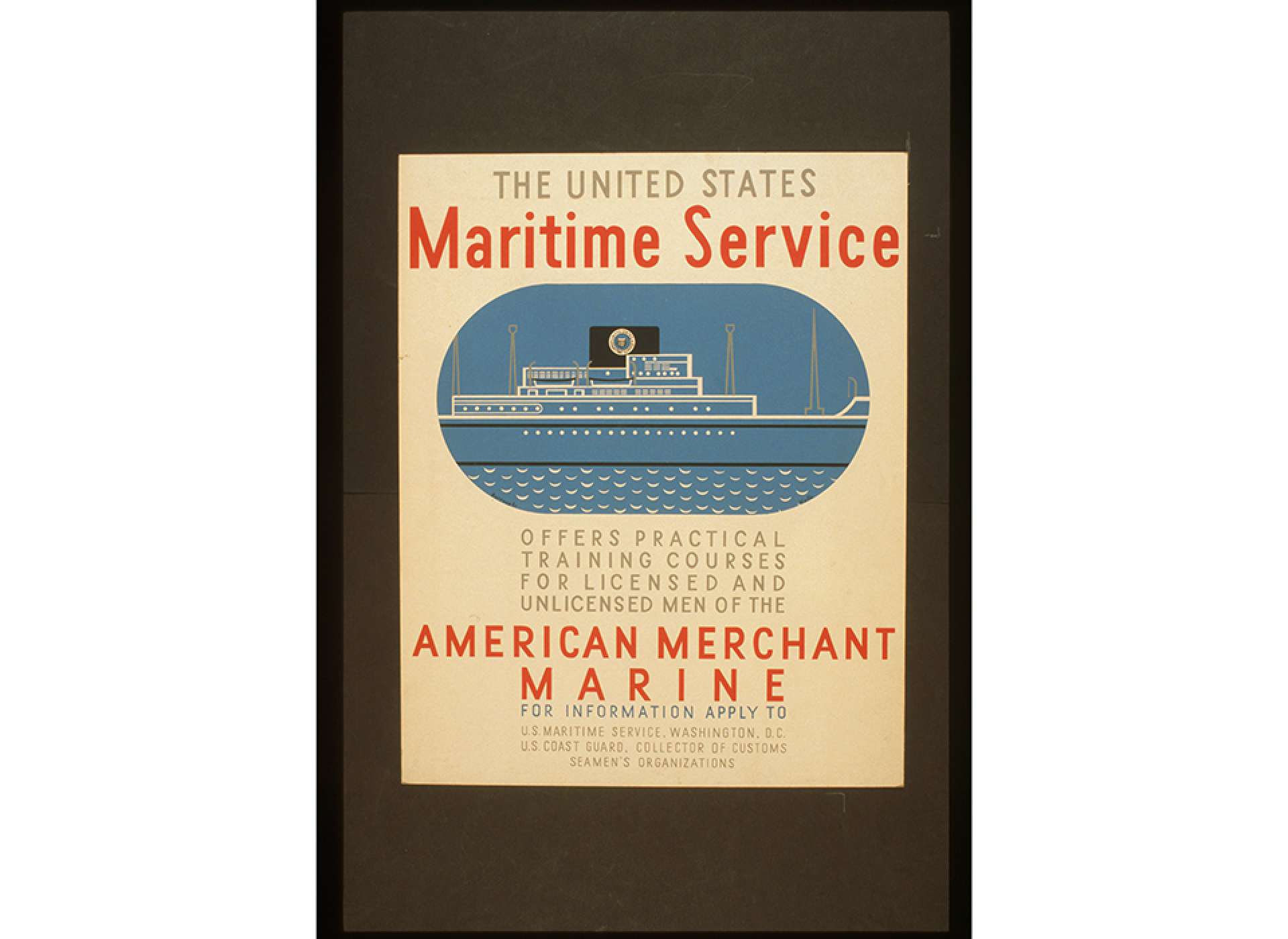
Poster for the United States Maritime Service offering training courses to members of the American Merchant Marine, 1939, by Leslie Bryan. Courtesy of the Library of Congress.
Merchant Marine Act 1936
The Depression, and a growing concern amongst US leaders for the fate of international shipping during growing tensions in Europe, prompted President Franklin D. Roosevelt to reconsider the importance of a merchant marine. Seeking to subsidize shipping companies that were necessary for trade yet suffering from profit losses under tariffs, FDR signed the Merchant Marine Act in 1936.
This act established the Maritime Commission that would oversee a multi-year ship-building program to replace the old and outdated fleet from World War I and granted subsidies to American-flagged, private ships to be on standby for defense purposes. These ships would be used for trade during peacetime, but available for the Navy to use during times of war or national emergency. The act also established a federal, comprehensive training program for merchant seamen. Previously, men seeking to learn the trade attended private nautical training schools aboard ships loaned by the Navy.
The Merchant Marine Act cleared the way for the creation of the Merchant Marine Cadet Corps (overseen by the Maritime Commission) in 1938. The Merchant Marine Academy would later be established at Kings Point, NY in 1943. Men (many who were unemployed seamen during the Depression) received training in seafaring aboard ships at temporary training sites under Port Inspector Instructors under the Corps. The ship-building program and the creation of an officer corps of mariners indicated FDR’s recognition of the importance of a merchant fleet to national interests.
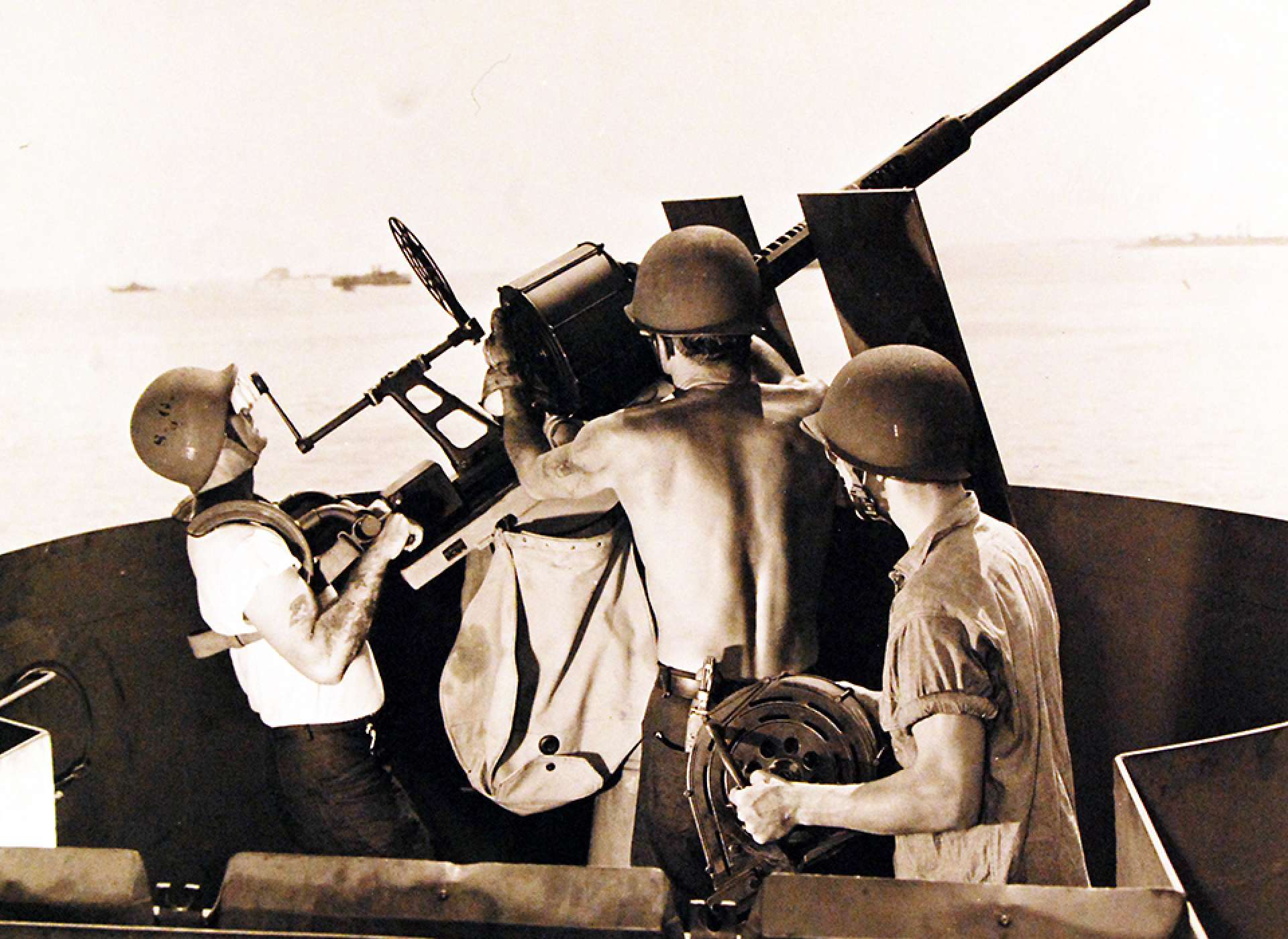
Merchant crew and Navy Armed Guard practice operating a 20mm gun onboard ship. Courtesy of the National Archives.
The Merchant Marine in World War II
The outbreak of war in Europe, however, would soon make the Merchant Marine significant for security and defense. Beginning with the Neutrality Act of 1939, American ships were barred from carrying war materiel purchased with cash by belligerent countries (and had the unintended effect of pushing now unemployed seamen with fewer work opportunities into the Merchant Marine Corps.) This was strengthened by the Lend-Lease Act of 1941 that allowed the United States to lend or lease war supplies to any country “vital to the defense of the United States.” The Merchant Marine now took on a more crucial, yet dangerous role in transporting the goods produced by the United States overseas to allies.
Shipping became an integral part of both German and Allied strategy early in the war. German submarines attacked British merchant ships in the Atlantic, disrupting supply chains to America’s allies. As a result of these attacks, merchant mariners experienced some of the earliest action of the war.
On December 21, 1940, the German submarine U-68 torpedoed SS Charles Pratt off the coast of West Africa without warning while its crew was transporting oil from Aruba to Freetown, Sierra Leone, killing two merchant mariners aboard. In response to attacks like these, FDR ordered the mass production of cargo ships designed to carry large quantities of war materiel in January of 1941. Those mass-produced ships were known as Liberty ships. By March, the Maritime Commission rapidly increased their production of a Liberty ship fleet.
Later in September, FDR requested Congress lift the ban on arming merchant vessels and the first Liberty ship, SS Patrick Henry, was launched later that month. These ships were to be manned by merchant mariners and to serve as a “bridge” to carry US manufactured war goods to the Allies who needed them across the Atlantic. Meanwhile, German submarines continued to attack American merchant steamers.
In October 1941, German raiders fired again off the coast of Freetown, this time taking aim at the unescorted and unarmed SS Leigh which was carrying ballast from Spain. Members of the Merchant Marine onboard abandoned the ship and climbed into four lifeboats, stranded at sea for two days before being rescued by a British ship.
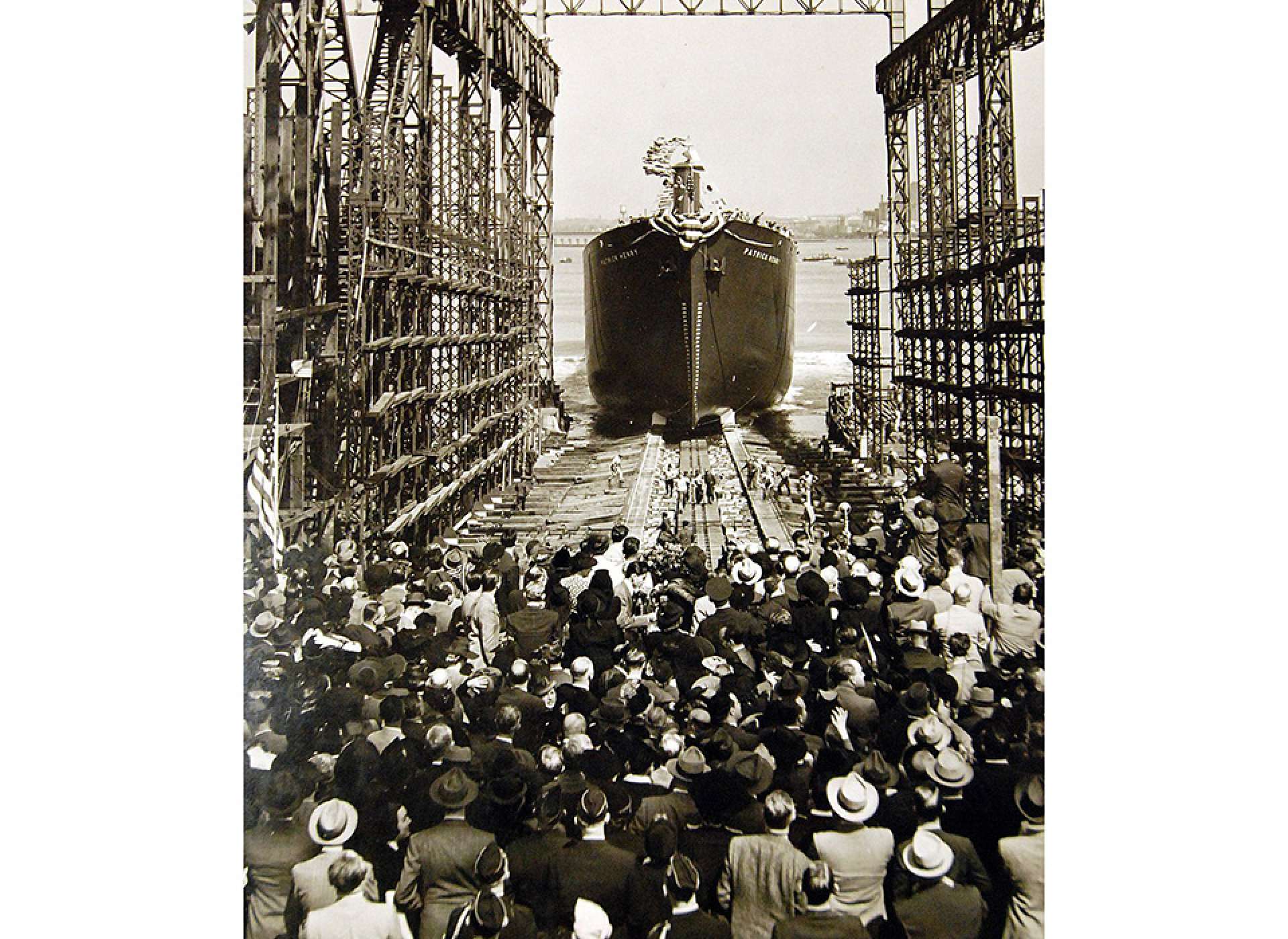
SS Patrick Henry launched from Baltimore on September 27, 1941. Courtesy of the Library of Congress.
The often slow-moving ships—and the civilian merchant mariners who maneuvered them—were easy targets for enemy fire. At 8 am on December 7, the Japanese submarine I-26 torpedoed SS Cynthia Olson, manned by mariners and transporting lumber for the Army from Tacoma, Washington to Honolulu. All aboard perished, making these merchant mariners among the earliest American casualties of the war. On the same day, the US Navy ordered SS President Harrison to evacuate a group of Marines from Beijing following the Pearl Harbor attack, but the Japanese attacked the ship and took 167 mariners prisoner.
In response, FDR established the War Shipping Administration (WSA) on February 7, 1942, designed as a “temporary war agency responsible for acquiring control over and operating all American merchant vessels other than those assigned to the Army and Navy.” The WSA took control of all off-shore merchant vessels under various charters and coordinated and also instituted a new ship-building program to replace the clunky Liberty ships with more agile Victory ships. The dangers for civilian mariners, however, remained as they were plunged into some of the most dangerous missions transporting war goods and men across the Pacific and the Atlantic.
Members of the Merchant Marine faced terrifying conditions moving goods and troops across the Atlantic. Mariners remained easy targets on the ships for the German U-boats, sometimes during the dangerous Murmansk Run while delivering materiel through the icy waters of the North Atlantic to Russian ports. In 1942, the United States sent 350 ships as part of Allied convoys in the Atlantic, resulting in the Germans sinking nearly 100 ships and killing thousands of mariners and naval gunners.
In other cases, the danger was present off the shores of the East Coast of the United States down through the Gulf of Mexico where German subs patrolled the waters and sank more than 70 ships. Mariners lived in constant fear of surprise attacks, including the German air attack on the Italian port of Bari in December of 1943. German aircraft destroyed five American Liberty ships, including SS John Harvey, which held 100 tons of mustard gas bombs that killed hundreds of mariners along with Allied military personnel and civilians.
Mariners who found themselves transporting supplies in the Pacific theater fared little better than their counterparts in the Atlantic. On April 6, 1942, two Japanese planes attacked SS Bienville which was docked in the Bay of Bengal after completing a mission transporting manganese ore, jute, burlap, and general cargo from Calcutta to Colombo. The Japanese continued to fire on the Bienville, its crew seeking cover. Only 19 of the 43 mariners aboard survived the attack.
Historian Michael Gillen recorded the oral history of Joseph Vernick who signed up for the Merchant Marine in October of 1941. By the end of December, he and his crew were in Manila, assisting the Army with running supplies to Corregidor and Bataan in light boats.
On January 3, 1942 the Japanese discovered Vernick and the rest of his crew at the hotel they were staying at and he and his fellow mariners became prisoners of the Japanese for three years. When troops finally arrived to rescue the prisoners, they found Vernick and the 123 other mariners suffering from starvation, disease, and injuries from physical punishment for attempting to escape.
With such dangerous conditions, why would men enlist in the Merchant Marine? Some were too old to serve in the traditional branches or were rejected for medical reasons, but still wanted to volunteer for the war cause. Men as old as 72 and as young as 19 often served on the same ship so long as they had seafaring experience and their specialized skills made them more valuable to the Merchant Marine than to other services.
Others, like Melvin Schroeder, didn’t quite understand what it meant to be a mariner, but figured it was better than serving in the Army, Marines, or Navy—failing to realize how naive his attitude was. He explained later in an interview,
“Why I happened to choose the Merchant Marine, about which I knew little, remains hazy. There were mixed reasons, precipitating factors. Among them, certainly, lurked the imminence of the draft board summons that would deny not only my freedom but also my freedom of choice.”
Certainly, while appreciative of steady income and gainful employment, the benefits did not necessarily outweigh the risks. As civilian mariners, crews were paid between 87 and 100 dollars per month, plus a 100 dollar per month bonus only while in war zones. Comparatively, under the Pay Readjustment Act of 1942 and depending upon marriage status and time in service, a private in the Army received 50 dollars per month. A mariner’s monthly pay was similar to the average salary of an American civilian employee during the war.
Recognizing Efforts of the Merchant Marine
Nevertheless, rumors about the nefarious motives of the mariners for signing up circulated among the public as well as soldiers, sailors, and marines. One was that members of the Merchant Marine were draft dodgers, looking for deferments from “real” service. But according to the draft board, service in the Merchant Marine was tantamount to military service—even if it was not formally recognized as such—and that “men found by the Local Board to be actively engaged at sea may well be considered as engaged in active defense of the country.” Providing logistical support, while not combat, was still service.
Because many mariners were former longshoremen and members of unions, some servicemen and journalists suggested that they used their workers’ rights to shirk their duties. On January 21, 1943, the Akron Beacon Journal reported that “six battle-scarred veterans of Guadalcanal have come back to Akron with the incredible claims that their buddies have been forced to unload their own supplies from a merchant ship on that island battleground because of the refusal of civilian crew men to work on Sunday.”
They claimed that a Merchant Marine vessel anchored two miles off Guadalcanal on a Saturday afternoon and the crew onboard only unloaded supplies for two hours before quitting because they refused to work on a weekend. The Beacon Journal reported that “hungry, malaria-weakened, and in some cases slightly wounded marines—fed up on a rice diet and lack of supplies—were forced to put out in their own barges to get supplies on Sunday.” An investigation into the matter by the Navy, however, proved that no such incident had occurred and this was clearly a misunderstanding on part of the marines.
Others recognized the importance of the Merchant Marine for the war effort. First Lady Eleanor Roosevelt proclaimed, “Without our Merchant Marine this war could not be won, and it is greatly to our interest to make the life of our merchant seamen a worthwhile existence in the future, because I believe we are going to need our ships to sail the seven seas.” And FDR repeatedly praised the Merchant Marine and “their skill and determination [that] will keep open the highway to victory and unconditional surrender.” While signing the GI Bill in June 1944, he also trusted that “Congress will soon provide similar opportunities to members of the merchant marine who have risked their lives time and time again during war for the welfare of their country.”
But FDR’s calls for Congress to recognize the sacrifices of the men—and women like Sadie O. Horton of North Carolina who served as a coastwise mariner in the Merchant Marine patrolling the waters near her home in her family’s barge and looking for abandoned ships—were not heard. The work of the Merchant Marine did not end when the war did, as they continued to transport men (including prisoners of war) and supplies needed for the occupation of Japan, and they refused to give up their fight for veterans status.
The Department of Defense maintained that mariners did not qualify as veterans not because their duties were not perilous, but because they did not meet its criteria based upon training and the organization of the service. In 1988, however, a US District Judge ruled that the Department of Defense’s views were arbitrary and unfair, prompting recognition of mariners who served in specific defense capabilities between 1941-1945 as veterans and eligible for GI Bill benefits.
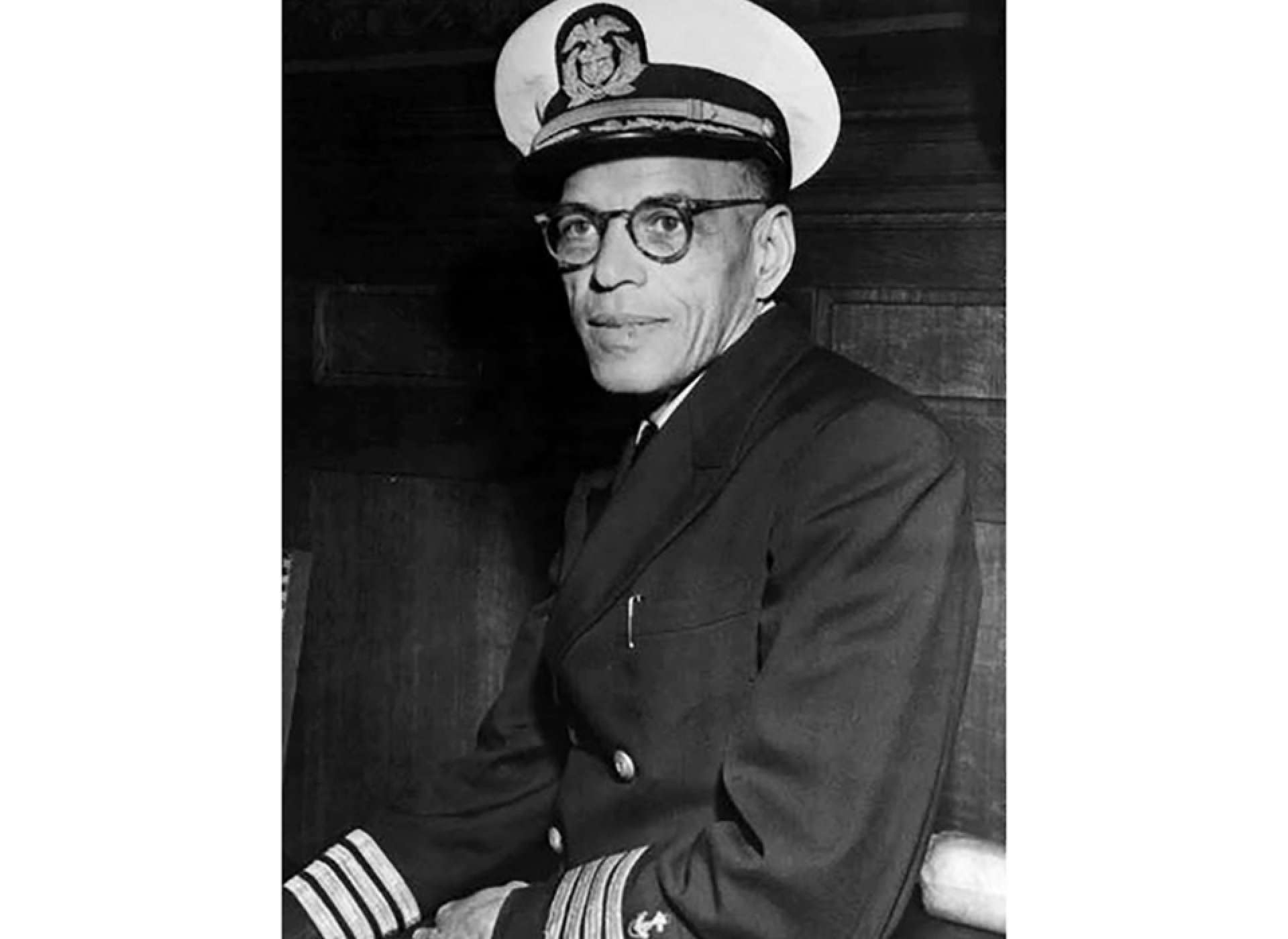
Portrait of Captain Hugh Malzac from 1942. Malzac commanded SS Booker T. Washington and was the first Black Master Mariner. Courtesy of the Department of Transportation.
The stories of Merchant Marine veterans like Edward Woods and Louis Taix are told in the Museum’s Merchant Marine gallery and continue to gain recognition through the work of historians like William Geroux. The hope of so many WWII leaders that the legacy of the Merchant Marine and its role in an Allied victory would be remembered is finally realized.
US Merchant Marine Gallery
Situated at the end of the Horatio Alger Association American Spirit Bridge, this gallery honors the civilian merchant mariners who risked their lives transporting weapons, men, and matériel to US troops overseas.
Stephanie Hinnershitz, PhD
Stephanie Hinnershitz is a historian of twentieth century US history with a focus on the Home Front and civil-military relations during World War II.
Cite this article:
MLA Citation:
APA Citation:
Chicago Style Citation:
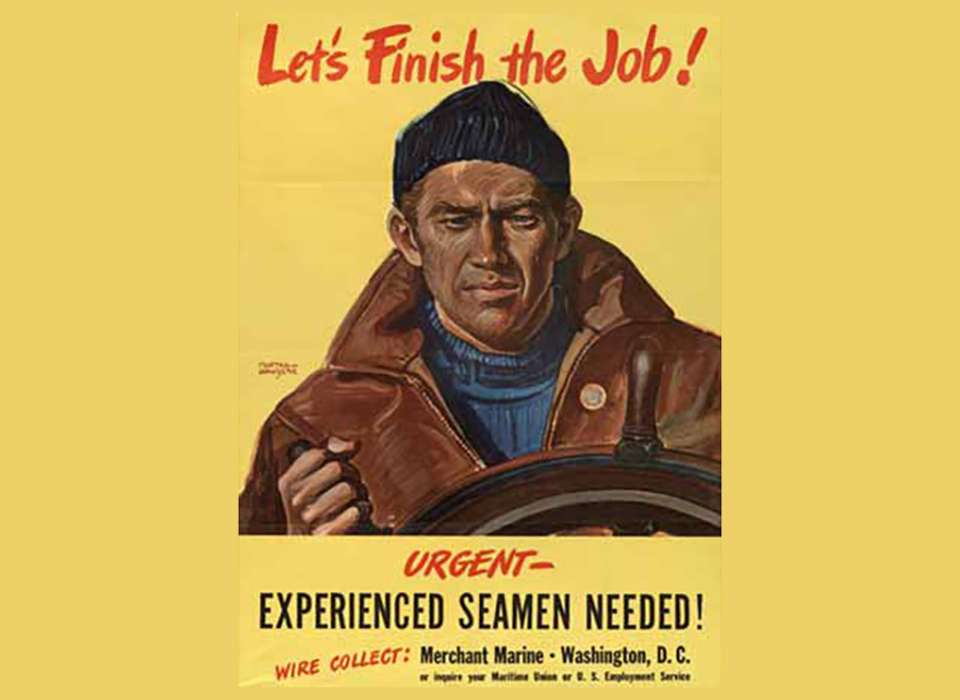
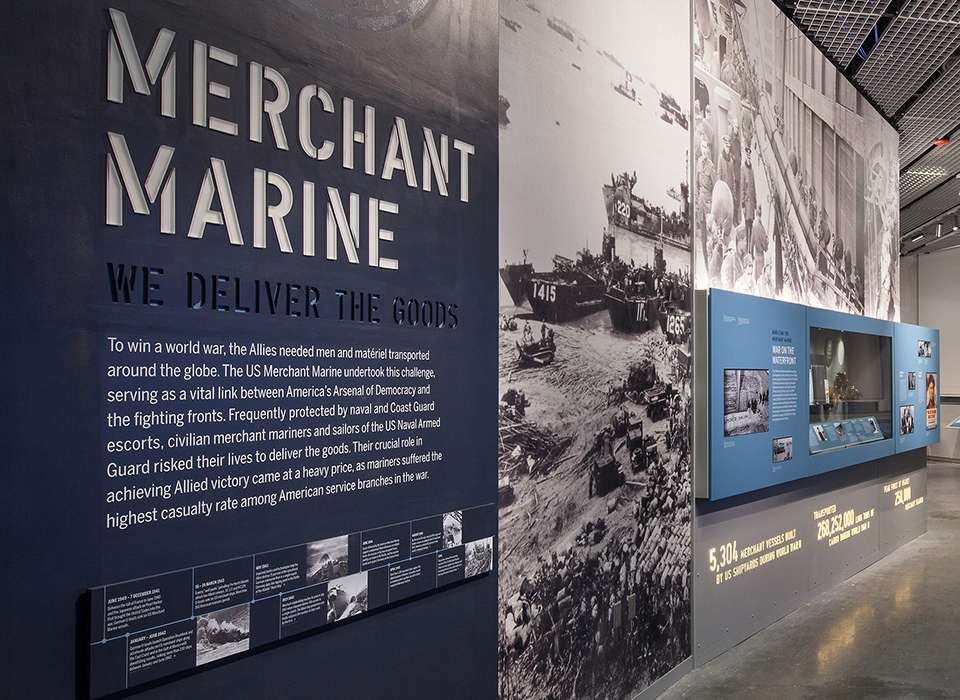
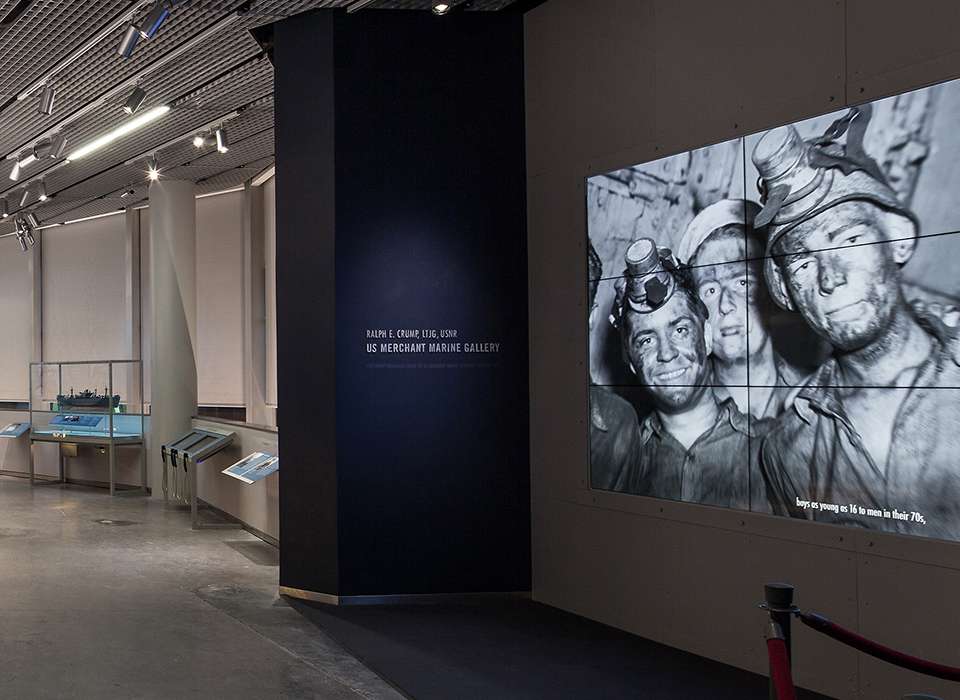




![Max Fuchs, New York City cantor, sings as Rabbi Sydney [sic] Lefkowitz, Richmond, VA, conducts the first Jewish services from Germany.](/sites/default/files/styles/max_650x650/public/2025-10/image1.jpg)



